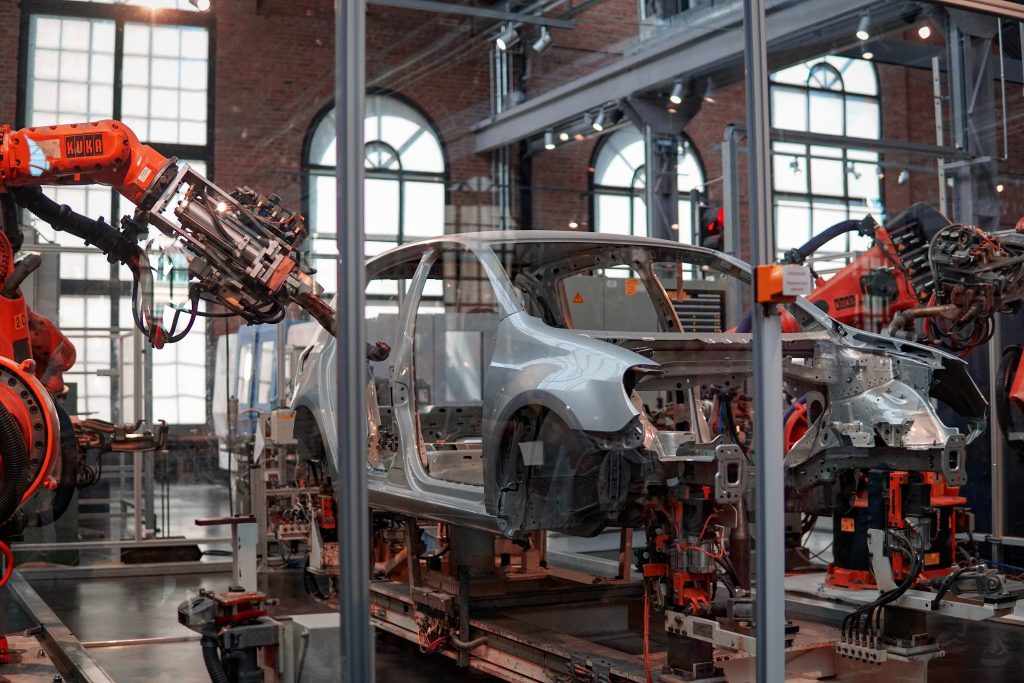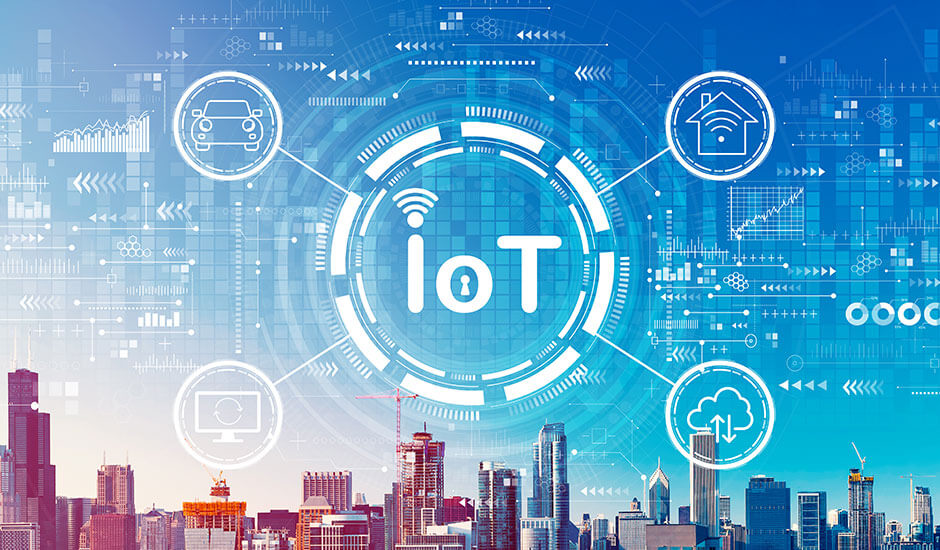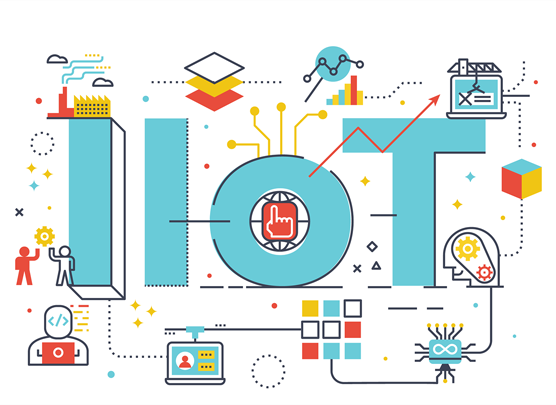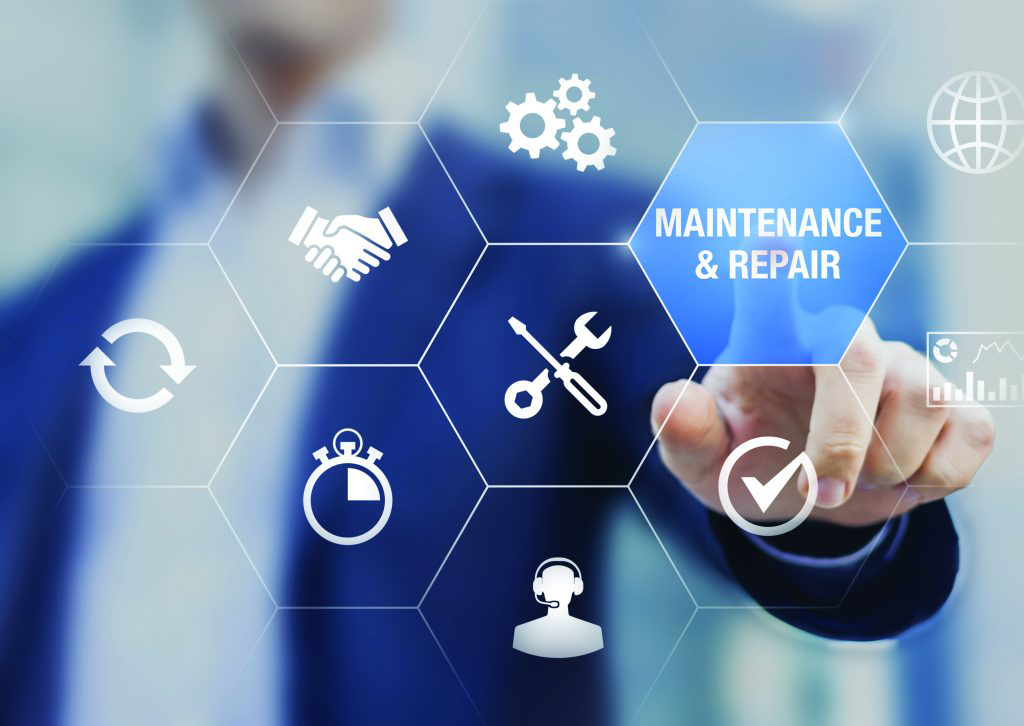Industrial Internet of Things (IIOT)
Smarter Future

In an era defined by technological advancements, the concept of the Industrial Internet of Things (IIOT) emerges as a transformative force that is reshaping industries worldwide.
We will go deep into the realm of IIOT, exploring its nuances, real-world implications, and the technological marvels that underpin its functioning. By unraveling the intricacies of IIOT, we unveil its true potential for industries and the myriad ways it propels us toward a smarter future.
Understanding the Difference:
IoT vs. IIOT

Although the terms “Internet of Things” (IoT) and “Industrial Internet of Things” (IIOT) might appear interchangeable, they denote distinct domains. IoT pertains to the interconnectivity of everyday devices, such as smart thermostats and wearable fitness trackers. On the other hand, IIOT focuses on industrial applications, orchestrating the seamless integration of sensors, machinery, and systems to optimize processes in sectors like manufacturing, energy, and transportation.
Defining IoT and IIOT with Examples
IoT comes to life through a plethora of examples. Picture a smart refrigerator that reorders groceries when supplies run low or a wearable health monitor that tracks your heart rate and sleep patterns. IIOT, in contrast, materializes through scenarios like predictive maintenance in manufacturing, where sensors monitor equipment health to forecast potential failures and mitigate costly downtime.
Unveiling the Inner Workings of IIOT
At its core, IIOT operates on the bedrock of connectivity and data exchange. Devices, sensors, and machines harmoniously communicate over the internet, funneling valuable data to central systems for analysis. This data-driven approach equips industries with insights that fuel informed decision-making, operational optimization, and innovation.

Technological Foundations of IIOT
The operational prowess of IIOT is anchored in a tapestry of cutting-edge technologies, including:
- Sensors and Actuators: These unassuming yet powerful devices detect environmental changes and enable machinery to react suitably. For instance, pressure sensors in an oil refinery can trigger safety protocols when pressure levels spike.
- Cloud Computing: The cloud serves as the repository for the torrents of data generated by IIOT devices. This centralized storage hub facilitates real-time analysis, seamless data access, and collaboration across geographic boundaries.
- Big Data Analytics: The copious amounts of data amassed by IIOT devices are unraveled through sophisticated big data analytics algorithms. These algorithms decipher patterns and anomalies, enabling actionable insights and foresight-driven decisions.
- Machine Learning and AI: These cognitive technologies empower IIOT systems to discern patterns from data streams, leading to predictive maintenance, anomaly detection, and continuous process enhancement.
The Essence of IIOT: Concepts and Functions
At its essence, IIOT epitomizes connectivity. By unifying devices, machines, and humans within a cohesive network, IIOT augments operational efficiency, slashes costs and fortifies safety measures across industries.

IIOT’s functions span a spectrum:
- Predictive Maintenance: IIOT-enabled sensors monitor equipment health in real-time, preemptively identifying maintenance requirements and averting unplanned downtimes.
- Resource Management: IIOT optimizes resource consumption by meticulously tracking energy usage, waste generation, and other pivotal parameters.
- Supply Chain Optimization: IIOT affords end-to-end supply chain transparency, facilitating prudent inventory management, order tracking, and demand forecasting.
- Quality Assurance: IIOT technologies scrutinize production processes, detecting deviations from benchmarks and ensuring impeccable output.
- Remote Monitoring and Control: IIOT empowers remote supervision and management of equipment and processes, enabling experts to intervene promptly from remote locations.
The Three Main Components of IoT
IoT’s triad comprises:
- Devices and Sensors: These physical entities, equipped with sensors or actuators, accumulate and transmit data.
- Connectivity: The pivotal thread binding devices is connectivity, be it via Wi-Fi, cellular networks, or Bluetooth.
- Data Processing: The data harvested by devices undergoes meticulous processing and analysis, yielding actionable insights that steer decision-making.
IIOT's Impact and Future
IIOT’s escalating adoption triggers a transformative impact across sectors. Manufacturers reap amplified productivity, trimmed expenses, and heightened safety protocols. Energy industries optimize resource utilization, while healthcare embraces remote patient monitoring and personalized treatments. Transportation streamlines operations, slashing emissions and fostering sustainability. In essence, IIOT orchestrates an industrial revolution, reshaping the fabric of industries and fostering an era of connectivity, precision, and growth.
IIOT's Integration in Real-world Industries
- Manufacturing: The manufacturing sector experiences a profound transformation with IIOT at its helm. Smart factories equipped with IIOT sensors and devices achieve unparalleled levels of efficiency. Machines communicate seamlessly, identifying potential issues before they escalate into major breakdowns. This proactive approach minimizes production interruptions and optimizes maintenance schedules.
- Energy: The energy industry embraces IIOT to enhance resource management and sustainability. Smart grids regulate energy distribution based on real-time demand, reducing waste and promoting renewable energy integration. Sensors embedded in power plants monitor operations, ensuring safety and efficiency while curbing environmental impact.
- Healthcare: IIOT’s impact on healthcare is revolutionary. Remote patient monitoring allows healthcare professionals to track patients’ vital signs, enabling timely interventions and reducing hospital readmissions. Smart medical devices, connected via IIOT, streamline diagnostics and treatment processes, leading to personalized care and improved patient outcomes.
- Transportation and Logistics: IIOT revolutionizes transportation through smart logistics and predictive maintenance. Sensors embedded in vehicles monitor performance metrics, allowing for timely maintenance and minimizing breakdowns. Additionally, IIOT-driven logistics optimize route planning, reducing fuel consumption and carbon emissions.
IIOT’s Prominence in Process Optimization
- Predictive Analytics: One of IIOT’s cornerstones is predictive analytics, where data from interconnected devices informs predictive maintenance models. By anticipating when equipment might fail, industries can schedule maintenance during planned downtimes, minimizing disruptions and avoiding costly emergency repairs.
- Data-driven Decision-making: IIOT equips industries with an abundance of data that empowers data-driven decision-making. Businesses can analyze historical and real-time data to identify trends, optimize operations, and devise strategies for future growth.
- Efficiency Enhancement: The real-time data influx from IIOT devices facilitates continuous process optimization. Industries can identify bottlenecks, streamline workflows, and eliminate inefficiencies. The result is improved productivity and cost savings.
Challenges and Considerations in IIOT Adoption
- Security Concerns: As industries become more digitally connected, security becomes paramount. The increased number of connected devices provides more entry points for cyberattacks. Industries must implement robust cybersecurity measures to safeguard sensitive data and operational integrity.
- Interoperability: IIOT involves diverse devices and technologies from various vendors. Ensuring seamless interoperability among these components can be challenging. Standardization efforts are crucial to create cohesive IIOT ecosystems.
- Data Overload: The abundance of data generated by IIOT devices can be overwhelming. Industries need sophisticated data management strategies, including effective data storage, processing, and analysis, to extract meaningful insights.
Looking Ahead: The Future of IIOT
The journey of IIOT has just begun, and its potential remains vast. As technologies like 5G networks evolve, IIOT’s connectivity and data exchange capabilities will be further enhanced. Edge computing will enable faster data processing at the source, reducing latency and enabling real-time decision-making.
Moreover, the synergy of IIOT with emerging technologies like blockchain promises enhanced security, transparency, and trust in data transactions. This combination can revolutionize supply chains, ensuring the traceability and authenticity of products.
In the realm of environmental sustainability, IIOT can play a pivotal role. Monitoring air and water quality in real-time using IIOT devices can aid in early pollution detection and help governments and industries take prompt corrective actions.
IIOT’s Impact on Employment and Workforce Dynamics
- Skill Evolution: The integration of IIOT necessitates a shift in the skills demanded by industries. As automation and data-driven decision-making become prevalent, the demand for skills in data analysis, cybersecurity, and AI programming rises. Upskilling the workforce to meet these demands is crucial.
- Collaborative Workspaces: IIOT fosters collaborative work environments where humans and machines collaborate to achieve optimal outcomes. Human expertise combines with AI-driven insights, leading to innovative problem-solving and improved efficiency.
- Job Reshaping: While some routine tasks might be automated, new job roles emerge in managing IIOT systems, analyzing data, and ensuring cybersecurity. These roles demand a blend of technical and analytical skills.
Ethical Considerations in IIOT Implementation
- Privacy: IIOT’s extensive data collection raises concerns about individual privacy. Striking a balance between data utilization for operational benefits and maintaining user privacy is critical.
- Data Ownership: Determining who owns the data generated by IIOT devices can be complex, particularly in shared ecosystems. Clear guidelines on data ownership and usage rights are essential.
- Transparency: Industries must ensure transparency in how IIOT data is collected, used, and shared. This transparency fosters trust among consumers and stakeholders.
Sustainability and Green Initiatives
- Resource Optimization: IIOT plays a pivotal role in sustainability efforts by optimizing resource usage. In sectors like agriculture, sensors monitor soil moisture levels, enabling precise irrigation and reducing water wastage.
- Emissions Reduction: IIOT-driven transportation systems optimize routes, reduce idle times, and minimize fuel consumption, contributing to reduced greenhouse gas emissions.
- Circular Economy: IIOT aids in building circular economies by enhancing traceability and recycling processes. Smart sensors can track product lifecycles, facilitating efficient recycling and reducing waste.
Overcoming Challenges for Widespread IIOT Adoption
- Cost Implications: While IIOT promises substantial benefits, initial implementation costs can be significant. Industries need to weigh these costs against long-term gains and devise effective implementation strategies.
- Change Management: Embracing IIOT requires cultural and organizational changes. Industries must invest in change management strategies to ensure seamless adoption and employee engagement.
- Interdisciplinary Collaboration: Successful IIOT implementation demands collaboration among various departments and stakeholders, including IT, operations, and management.
Paving the Path to a Connected Future
The journey of the Industrial Internet of Things (IIOT) is a tale of transformation and evolution. From its foundational technologies to its real-world applications, IIOT has revolutionized industries, driving efficiency, innovation, and sustainability. As industries embrace IIOT, they need to navigate challenges, adapt their workforce, and address ethical considerations.
The true potential of IIOT lies not just in its technical capabilities but in its ability to reshape industries, create new job opportunities, and pave the way for a connected, intelligent, and sustainable future. With ongoing advancements in technology and the ever-growing interconnectivity of devices, the journey of IIOT continues to unfold, promising a world where industries thrive on the power of data-driven decisions, collaboration, and unprecedented growth.